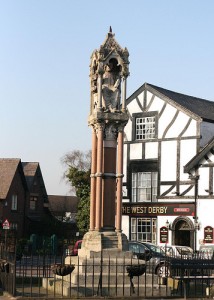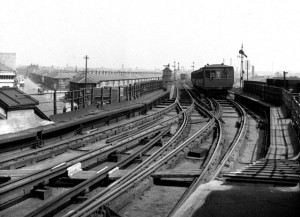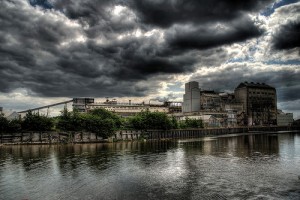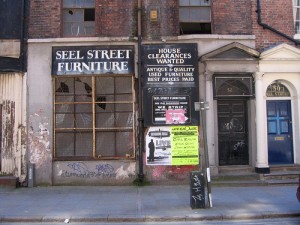
West Derby is one of nearly 40 Conservation Areas in Liverpool. West Derby 2, by Mrs Magic via Flickr
Every month or so English Heritage releases a new issue of Conservation Bulletin (ConBull), and the latest issue is on Conservation Areas (available in PDF and Microsoft Word formats). Conservation Areas (CAs) were created with the aim of ‘preserving and enhancing’ the built character of a location, and it’s worth flicking through this ConBull for its relevance to areas of Liverpool.
The document is the collected work of experts in the field of conservation, though what is refreshing in recent English Heritage publications is the emphasis on a balance between preservation and development, which can often be in stark contrast to the most conservative Nimby opinion pieces (you know who you are!).
This issue thankfully takes into account the social and economic benefits of preserving historic urban and rural areas, which can only aid the argument for their protection. The whole publication aims to integrate CAs into a positive role as part of the planning process, partcicularly in struggling economies where CAs can easily be cast as an an obstruction to recovery.
What is revealed is that Conservation Areas, in the British sense, are unique in the world – other countries tend to include natural formations within the Conservation Areas definition (what we might in the UK call Sites of Special Scientific Interest, or perhaps Nature Reserves). Examples of this type can be found in China, Australia and Mexico, and this magazine visits all three areas for a comparative look.
Of major interest are the methods by which Conservation Areas are designated. Just as it is useful to know your chances of getting a local building listed, it pays to understand how the professionals judge the importance of CAs, and how the practice of dealing with threats to them works. This issue of ConBull is therefore useful if you live in and wish to help conservation efforts in a local CA.
As an interesting aside, it is reported in this issue that Sefton Park was valued by CABE at £105 million. I’m not sure what this price was based on, but it helps put the Park into context of the interest in economic value of CAs.
The most promising thing about this Conservation Bulletin, and a lesson for us all perhaps, is that it shows that English Heritage do not consider Conservation Areas to be ‘set and forget’ designations. They are part of the planning process, part of people’s living and working environments, and as such should be considered as evolving parts of the landscape, just like the cities in which they sit.
Do you live in one of Liverpool’s Conservation Areas? What are your attitudes to change? What’s distinctive about the place and what is under threat?
Conservation Areas were created in 1967 as part of the Civic Amenities Act. There are 9300 in England, nearly 40 if which are in Liverpool. The aim of CAs is to allow authorities to “determine which parts of their area are areas of special architectural or historic interest the character or appearance of which it is desirable to preserve or enhance” Planning (Listed Buildings and Conservation Areas) Act 1990 (c. 9) (c. 9)








